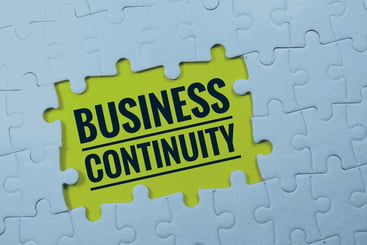Relevant Contents
Need Tailored Business Continuity Insights?
Contact Us Now for Personalized Guidance!
A solid IT architecture keeps your business running efficiently, but what if you don’t have one? These are key indicators for when a rebuild is in order.
Many come into the planning of an IT infrastructure with the best intentions. But even with a solid plan in hand, mismanagement, departmental politics, and emphasis on expediency can morph your implementation into a series of case-by-case decisions and leave you with a structure that doesn’t reflect your original intentions.
How do you know if your organization has strayed from the path? Here are some indicators that the current IT architecture has taken your company hostage.
Numerous Outages
Numerous outages can be an indication of an old or vulnerable structure or implementation. The items discussed below may be the cause of the outages, as environments which have multiple touch points or overly complicated implementations tend to be harder to support and manage.
Redundant Applications
Applications that perform the same or similar functions may be redundant. How many applications do you have with comparable capacity where only certain functions are in use by each app or where different departments are using other applications for similar functions? A common example of this is the number of reporting tools or management/monitoring utilities you’re using within your organization. A corollary is the replacement of applications because they do not “work.” We have seen clients remove or replace enterprise-class solutions due to the implemented product not performing as expected. In these cases, it was not the tool that was the issue, but the implementation and use of the application.
Redundant Data
While redundant data does not imply that there is an issue with the IT environment, it does indicate a processing architecture that is not as efficient as it could be. It increases storage and security costs related to the type of data you store or where the duplicate data exists. It may also demonstrate a lack of planning related to the storage or use of data.
Too Many Servers or Hardware Devices
In today’s hardware environments, server architecture allows for highly concentrated server use, especially when using a virtual infrastructure. The use of many physical devices may indicate an opportunity for consolidation. There are very few applications today that require physical hardware unless they are older, have special supporting devices, or need significant security. Let’s discuss the use of outdated hardware and technology.
Custom Scripts and Processes or Exceptions
The use of custom scripts to enable integration between systems or to transform data may indicate a challenging environment. Extensive custom scripting or development may show an inability to use an environment as it’s intended. It also indicates the lack of ability to modify processes to fit within the defined architecture. If exceptions become the norm to your defined IT architecture, you may need to reevaluate the reason behind your standards and examine your rationale for allowing exceptions.
Outdated Technology
Outdated technology may be a result of the items discussed above. Often application choices and delayed updating of an application can lead to the use of outdated technology. An all-too-common example of this are the many organizations running Windows XP workstations due to their inability to upgrade another application that depends on it.
So You’ve Discovered a Flaw in Your IT Architecture
If you’ve discovered one or two of the issues above exist in your IT environment, don’t panic. It doesn’t always mean you have an unstable environment. You may have just successfully identified a vulnerability to include in your recovery planning. However, the presence of one or more of the issues discussed above does complicate reliability and make recovery planning more difficult and costly. Also, don’t be quick to blame IT for the issues. IT architecture issues like the ones we’ve mentioned can often be the result of moving too fast on new projects. It can also be a result of slim operational funding.
Businesses are not always willing to spend the staffing or money it takes to maintain a sound IT environment. There are often similar business processes driving the need for the various technology solutions. Correcting long-standing architecture issues often takes time and effort, but they can pay off in increased availability and reliability. If it’s not the time for your business to start restructuring an IT environment, identifying an issue like those listed above means updating or creating a well-documented and tested recovery plan. When that vulnerability in your IT architecture causes a disruption, you’ll want to be prepared.

Richard Long
Richard Long is one of MHA’s practice team leaders for Technology and Disaster Recovery related engagements. He has been responsible for the successful execution of MHA business continuity and disaster recovery engagements in industries such as Energy & Utilities, Government Services, Healthcare, Insurance, Risk Management, Travel & Entertainment, Consumer Products, and Education. Prior to joining MHA, Richard held Senior IT Director positions at PetSmart (NASDAQ: PETM) and Avnet, Inc. (NYSE: AVT) and has been a senior leader across all disciplines of IT. He has successfully led international and domestic disaster recovery, technology assessment, crisis management and risk mitigation engagements.


